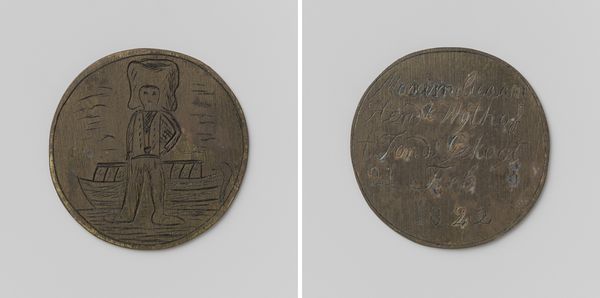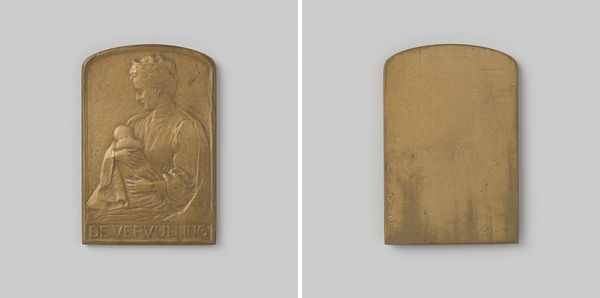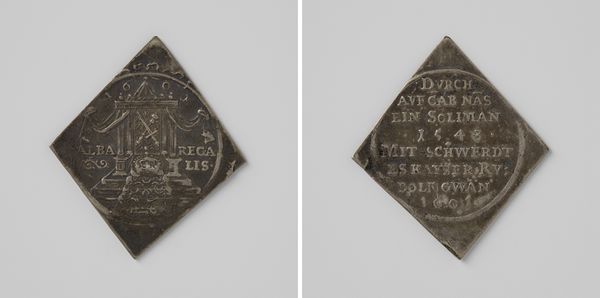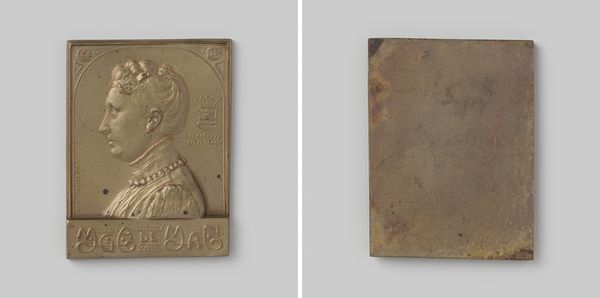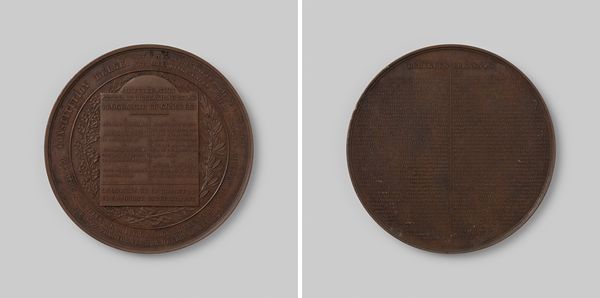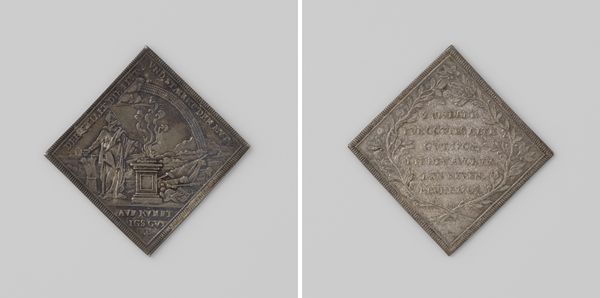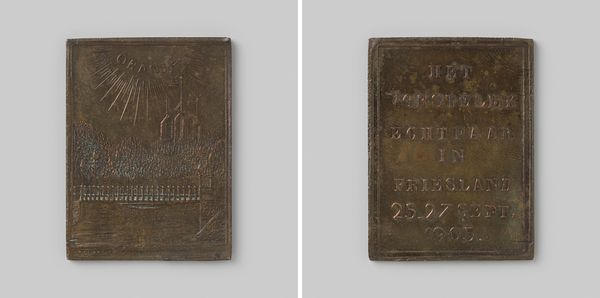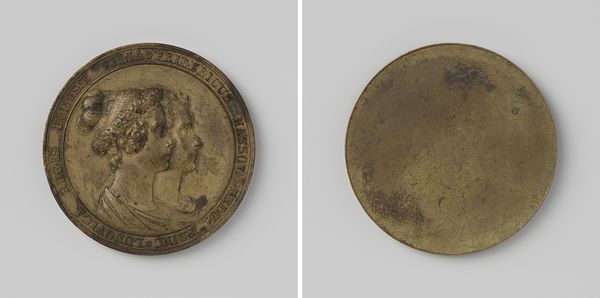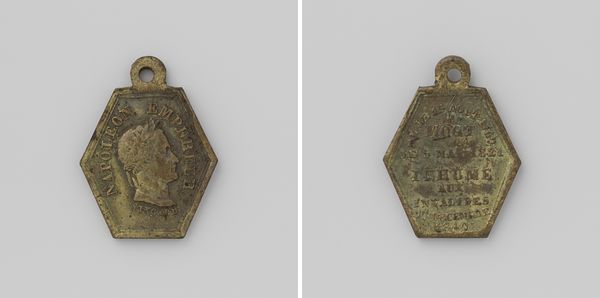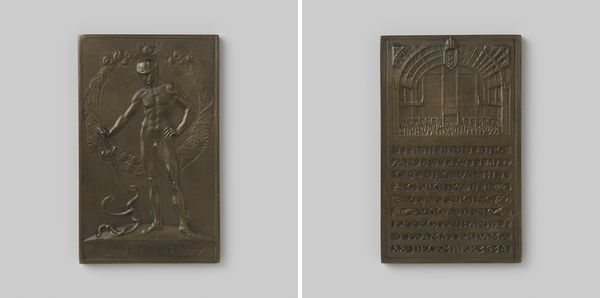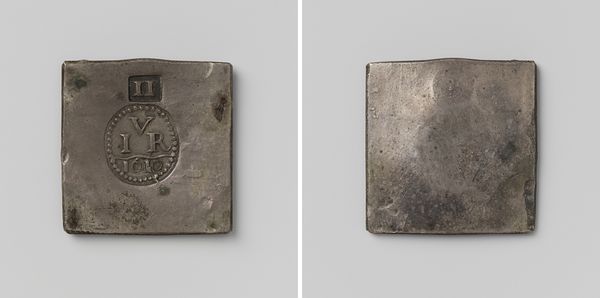
print, metal, relief, sculpture
# print
#
metal
#
sculpture
#
relief
#
sculpture
#
history-painting
#
decorative-art
#
decorative art
Dimensions: height 7.7 cm, width 10.6 cm, weight gr
Copyright: Rijks Museum: Open Domain
Curator: This work is a commemorative plaque, titled "Capitulatie van Nederland, 14 mei 1940, door generaal Winkelman," dating from between 1940 and 1945. It appears to be a print on metal, potentially a relief sculpture as well. Editor: It certainly feels somber, doesn't it? The cool tones of the metal and the subject matter—the capitulation—project a real sense of defeat. What strikes me most is how utilitarian it seems, despite being decorative art. Curator: Absolutely. We need to consider the means of production. The use of printmaking on metal likely allowed for relatively quick and cheap creation, signifying its wide accessibility for the public after a historic moment. Think about how many households might have displayed this. Editor: And to what purpose? Beyond simple remembrance, I wonder about the narrative it constructs and promotes. Presenting General Winkelman in profile evokes classical portraiture, elevating him but also associating him with a profoundly painful moment. The public reception, conditioned by wartime experiences, must have been complex. Curator: The plaque's design includes imagery of artillery, ships, and aircraft alongside the general’s portrait. What does this juxtaposition of leadership with weaponry signify in its historical moment? Was it meant as a testament to Dutch military capability, a reflection of the circumstances of surrender, or an admonition of war's material cost? Editor: That cost is unavoidable, but what's more is how social and political contexts can imbue even decorative objects with monumental significance. It’s interesting to reflect on its existence today as an art object, divorced, for some, from the weight of the actual capitulation. Curator: Precisely! Looking closely at the back, one sees its material vulnerability. It isn’t eternal or precious, its cheap making process speaks more of historical preservation rather than immortality through high art. Editor: In short, it shows us how art acts as both mirror and record. Not merely a decorative item, but a portal into collective memory. Curator: Indeed. Considering the metal, print and possibly wood aspects, one gets an appreciation of how materiality affects interpretation, and can further speak to larger concepts.
Comments
No comments
Be the first to comment and join the conversation on the ultimate creative platform.
